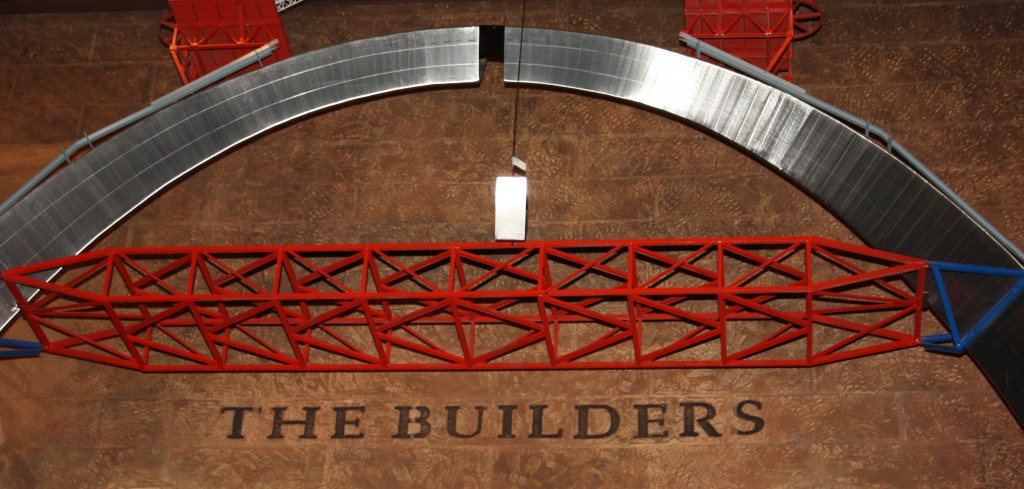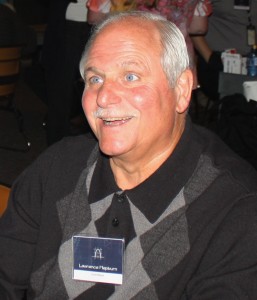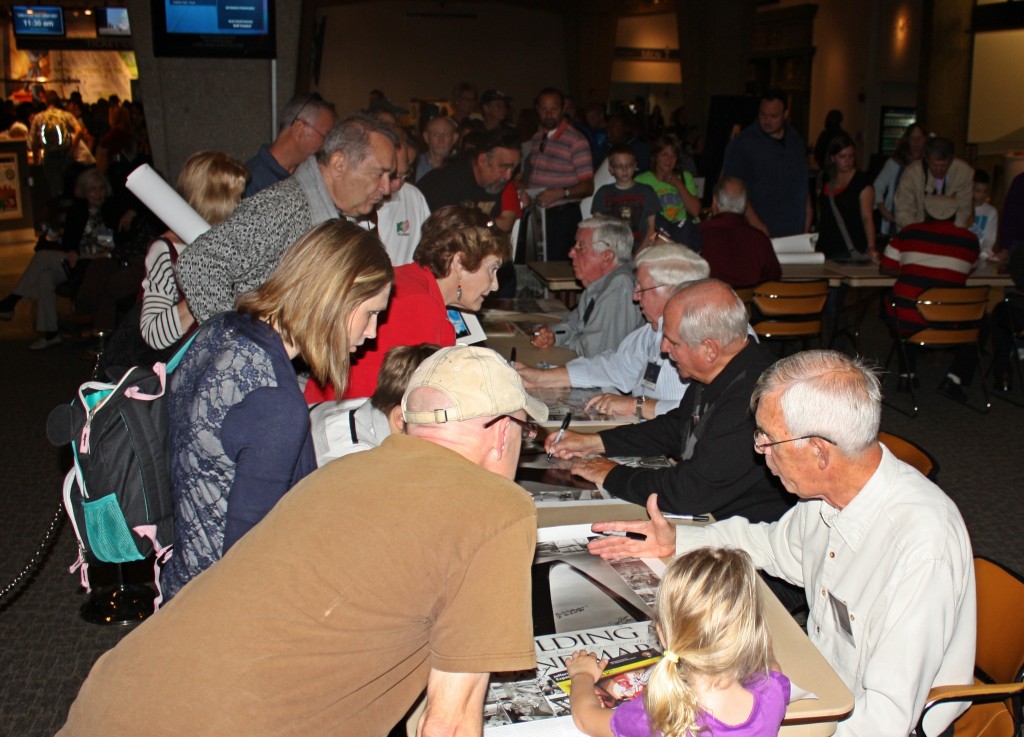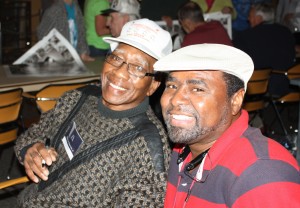
By MARY ANN HOLLEY
Correspondent
Downtown St. Louis – They didn’t consider themselves artists or extraordinary craftsmen, but on Nov. 2 about a dozen retired union tradesmen sat outside of the Museum of Westward Expansion talking with visitors who wanted autographs and a first-hand brush with the men who built the Gateway Arch.
At its 49th anniversary, the Arch has been proven by the test of time. The double-walled, triangular sections placed one on top of another, then welded inside and out; the complex engineering design and construction hidden from view became a sparkling stainless steel monument to the men who built it and to the city’s significance as the Gateway to the West.
Its inner and outer steel skins, joined to form a composite structure, give it strength to survive an earthquake and permanence to defeat hurricane force winds up to 150 mph.
‘IT TOOK STAMINA’

Larry “Butch” Hepburn, former organizer/business representative with the International Brotherhood of Electrical Workers Local 1, worked on the Arch for about two and one-half years running wires for the Arch’s interior lighting and for later installation of the elevators.
“At the time, I thought it was a heck of a waste of money, but it’s probably one of the most visited monuments in the world,” said Hepburn. Russia’s Red Square used to be ahead of it, Hepburn said, but only because the Communist government required residents to visit.
When he was working on the Arch, Hepburn was a second-year apprentice making $1.75 per hour plus benefits.
“Working on the Arch wasn’t for everyone,” he said. “A lot of the guys got motion sickness because as the Arch went up the clouds moved overhead giving the feeling of movement inside the close quarters of the steel triangles. It was a tough job. Everything you did kept going up and turning. It took stamina. Just getting to the location of where you could work was something. We’d walk 500 feet of steps just to get where we needed to be.”
Hepburn’s brother, Bill, another former IBEW Local 1 business representative, also worked on the job.
“I think we’re the only brothers who worked on the Arch,” Hepburn said.
MAKING HISTORY

Mike Moriarty, now retired from Heat and Frost Insulators Local 1, was the youngest guy on the job – just 15 years old and working on a summer permit – when the Arch was built.
At the time, Moriarty said, it was “just a job” for him; he dreamed he was making history.
But he liked the work – enough to stay in the trade for 40 years. He became a journeyman in 1969.
“My boss bet me $10 that I couldn’t run up the steps to the top,” Moriarty said. “I was young then, so I took off, ran to the top and got to watch the last section placed.”
These days, visitors to the St. Louis Arch take an elevator to the top, traveling 340 feet per minute during a five-minute ride. Moriarty had to trudge up 1,076 steps, built section by section as the structure gained height.
Moriarty was paid $2.48 an hour for his work, but he said, “$10 was a huge amount of money back then.”
‘LUCKY DAY’
James Chrismer of the Sheet Metal Workers Local 36 worked just one day on the Arch, perfecting expansion joints.
“It was my lucky day,” Chrismer said. “Who knew I’d be sent to a job as important as the Arch? It doesn’t get any better than that.”
Dell King of Roofers Local 2 says the first thing he hears when he tells people he worked on the Arch is that “there’s no roof up there.”
“I ask them what are they standing on?” King says. “We waterproofed all of the concrete, starting by Lenore Sullivan Blvd. There was a 60-foot concrete foundation. When you have that much concrete, it has to be done right.”
POINT OF PRIDE

Warren Barnes, a member of Laborers’ Local 110 showed visitors his heavy brass medallion emblazoned with an image of the Arch and its construction. Every craftsman who worked on the Arch received one, he said.
“I was happy to be on the Arch job,” Barnes said.
His family has a long history of working on St. Louis landmarks.
He and his son, Daniel, another member of Local 110, also worked on other St. Louis landmarks.
“My dad worked on the old Busch Stadium and I worked on the new Busch Stadium,” Daniel Barnes said.
“It was always Dad’s big thing while we were growing up. He always talked how he worked on the Arch and the old Busch Stadium. It’s just awesome. It’s a pride thing.”

